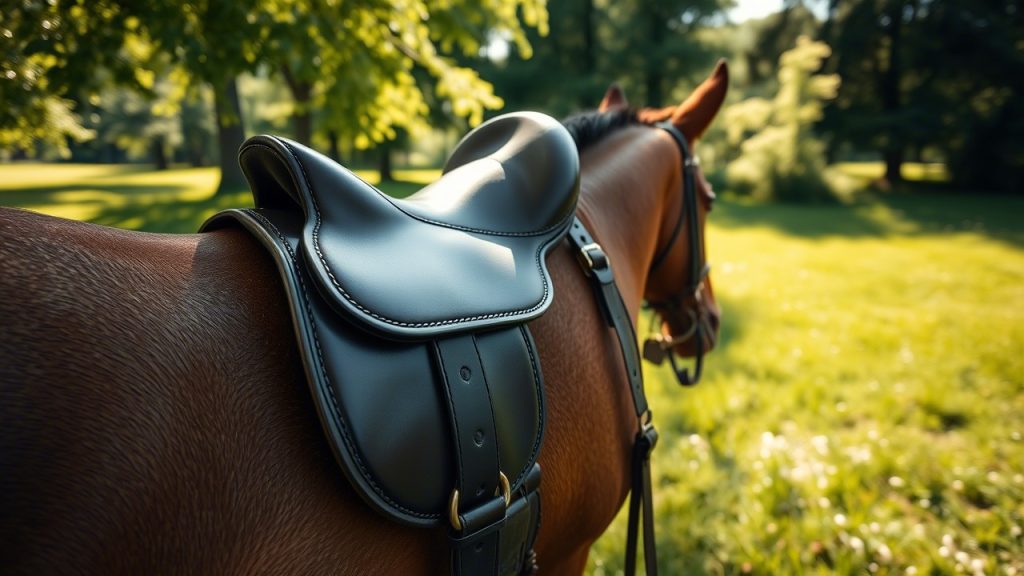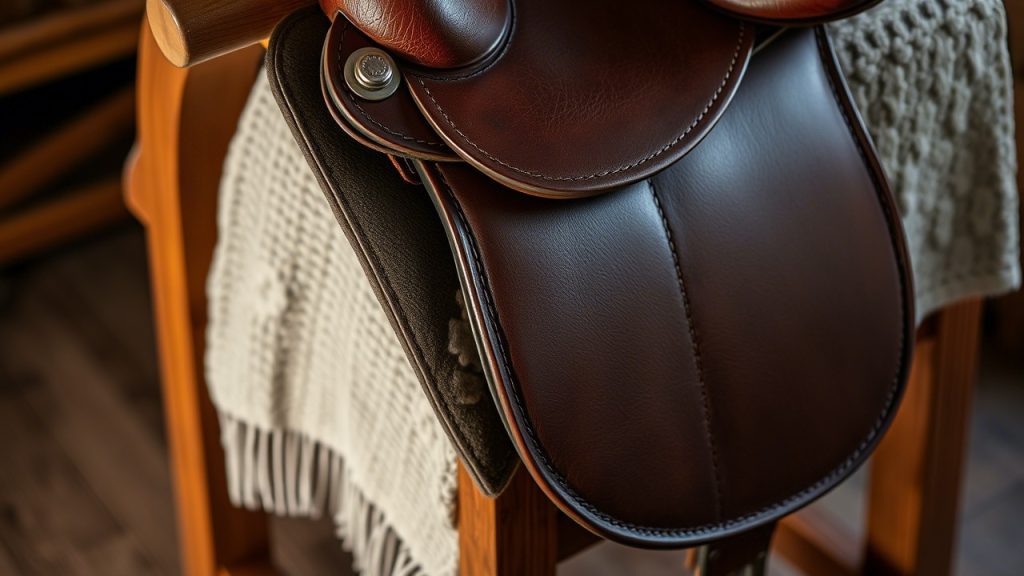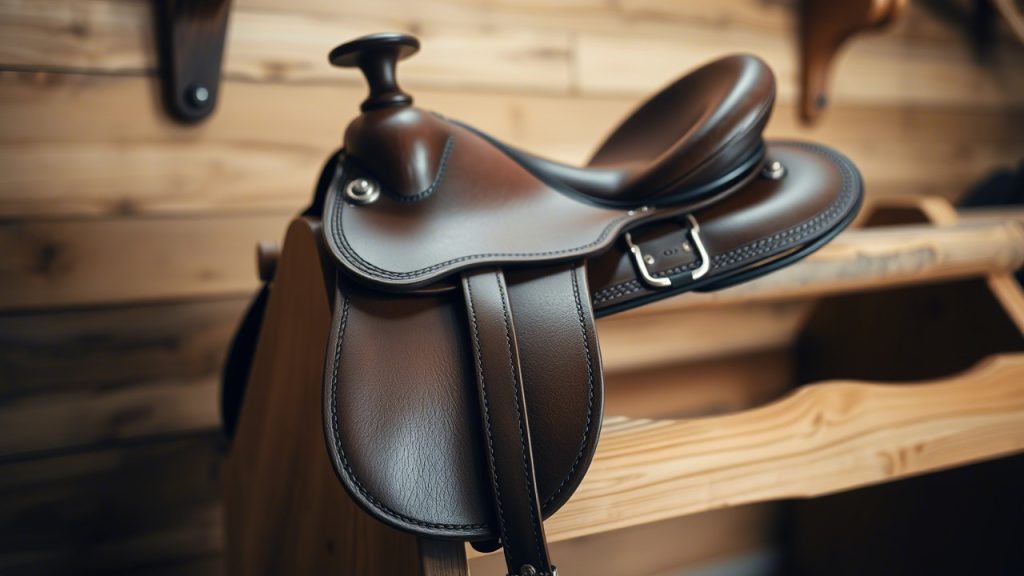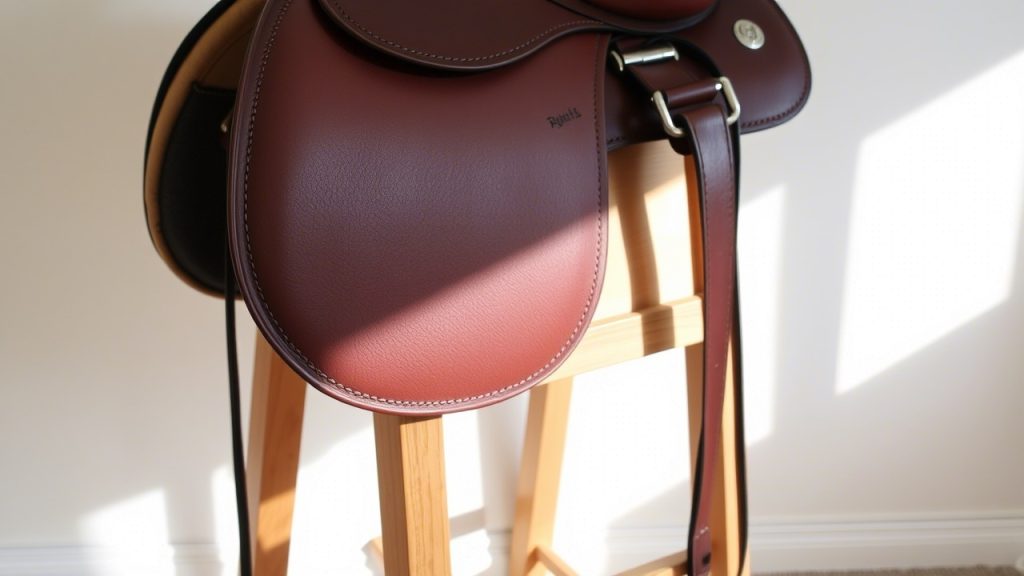Horseback riding is a rewarding and exhilarating activity, but poor posture in the saddle can lead to discomfort, fatigue, and even long-term physical issues for riders. A well-designed saddle plays a critical role in supporting proper rider posture, aligning your body, and enhancing your riding experience. Whether you’re a beginner or an experienced equestrian, choosing the right saddle can transform your posture in just days, making rides more comfortable and effective. We’ll explore the 8 best horse riding saddles to improve posture in just days, offering practical solutions to help you ride with confidence and poise.
This blog post is packed with actionable tips, expert insights, and saddle recommendations to support better posture. From saddle fit to innovative designs, these ideas are designed to deliver quick results for riders of all levels. Let’s dive in and discover how to sit tall in the saddle!
Why Posture Matters in Horseback Riding
Before we explore the saddle recommendations, let’s understand why posture is so important. Proper rider posture ensures balance, control, and clear communication with your horse. Poor posture, on the other hand, can cause:
- Back, hip, or shoulder pain for the rider.
- Imbalance that affects the horse’s movement.
- Reduced control and responsiveness during rides.
- Long-term strain or injury to muscles and joints.
A saddle that promotes good posture:
- Aligns your pelvis, spine, and shoulders for a natural, upright position.
- Supports a deep, balanced seat for stability.
- Reduces strain on your body during short and long rides.
- Enhances your horse’s comfort by distributing weight evenly.
By choosing the right saddle and implementing the following recommendations, you can improve your posture significantly within days. Let’s get started!

1. Invest in a Professional Saddle Fitting
A saddle that fits both you and your horse is the foundation of good posture. An ill-fitting saddle can force you into an unnatural position, leading to slouching or strain.
How to Do It:
- Hire a certified saddle fitter registered with the Society of Master Saddlers (SMS).
- Schedule a fitting session to assess the saddle’s fit for your body and your horse’s back.
- Ensure the saddle’s seat size, flap length, and tree width suit your build and riding style.
Why It Improves Posture:
A properly fitted saddle positions your pelvis correctly, encouraging an upright spine and balanced seat, with noticeable posture improvements in days.
Pro Tip: Check saddle fit every 6–12 months to account for changes in your horse’s conformation or your riding goals.
2. Choose a Dressage Saddle for Deep Seat Support
Dressage saddles are designed to promote a deep, centered seat, making them ideal for improving posture, especially for flatwork and schooling.
How to Do It:
- Select a dressage saddle with a deep seat and long, straight flaps.
- Ensure the saddle has a wide, supportive tree to distribute weight evenly.
- Test models like the Albion SLK Ultima, known for its posture-enhancing design.
Why It Improves Posture:
The deep seat encourages a straight spine and relaxed pelvis, helping you maintain an upright position effortlessly.
Pro Tip: Pair with a riser pad if needed to adjust saddle balance for optimal posture.
3. Opt for a Saddle with a Balanced Tree
A saddle with a balanced tree ensures even weight distribution, which is crucial for maintaining proper posture without compensatory slouching.
How to Do It:
- Choose saddles with a tree designed for your horse’s back shape and your weight.
- Work with a fitter to confirm the tree’s width and balance.
- Consider the Bates All Purpose Saddle, which offers a balanced tree for versatility.
Why It Improves Posture:
A balanced tree prevents tipping forward or backward, keeping your body aligned and posture correct.
Pro Tip: Place the saddle on your horse without a pad to check for level alignment.
4. Use a Saddle with Adjustable Features
Saddles with adjustable gullets or panels allow you to fine-tune the fit, ensuring optimal support for your posture as your horse’s shape or your riding needs change.
How to Do It:
- Select saddles with systems like the Wintec Easy-Change Gullet System.
- Adjust the gullet to match your horse’s current conformation.
- Test the Acerugs Premium Black Leather English Saddle for affordable adjustability.
Why It Improves Posture:
Adjustable saddles maintain proper fit, preventing posture issues from an unbalanced or tight saddle.
Pro Tip: Consult a fitter for precise adjustments to avoid over- or under-adjusting.

5. Add a Padded Seat Saver for Extra Support
A padded seat saver enhances rider comfort and supports a balanced, upright posture by cushioning your seat bones.
How to Do It:
- Choose a seat saver with gel or foam padding, like the Toklat CoolBack Seat Saver.
- Ensure it fits securely over your saddle’s seat without slipping.
- Test during a short ride to confirm comfort and posture benefits.
Why It Improves Posture:
Seat savers reduce pressure on your pelvis, encouraging a relaxed, upright position that improves posture quickly.
Pro Tip: Combine with core-strengthening exercises like yoga to maximize posture gains.
6. Select a Saddle with High-Quality Materials
Saddles made from premium leather or durable synthetics mold to your body, providing a comfortable, posture-supportive seat.
How to Do It:
- Choose saddles with soft, supple leather or UV-resistant synthetics like microfiber.
- Consider lightweight options like the HILASON Flex Tree Western Saddle for comfort.
- Ensure the saddle’s seat is contoured to support your pelvis.
Why It Improves Posture:
High-quality materials conform to your body, reducing strain and encouraging a natural, upright posture.
Pro Tip: Clean synthetic saddles with water first to maintain their texture and avoid slipperiness.

7. Try a General Purpose Saddle for Versatility
General purpose (GP) saddles offer a balance between deep seat support and flexibility, making them ideal for riders who switch between disciplines while prioritizing posture.
How to Do It:
- Select a GP saddle with a moderately deep seat and adjustable stirrup bars.
- Test models like the Collegiate Lectern GP Saddle, designed for rider balance.
- Ensure the saddle fits your horse’s back to avoid compensatory posture adjustments.
Why It Improves Posture:
GP saddles provide a supportive yet versatile seat, helping you maintain proper alignment across various activities.
Pro Tip: Adjust stirrup length to keep your legs relaxed and aligned with your hips.
8. Incorporate Non-Slip Grip Pads
Non-slip grip pads stabilize your seat and legs, reducing the need to tense your muscles to stay in position, which can lead to poor posture.
How to Do It:
- Attach grip pads to the saddle’s flaps or seat, using materials like silicone or suede.
- Choose pads like the ECP Non-Slip Saddle Pad for secure grip.
- Practice riding with pads to adjust your balance and posture.
Why It Improves Posture:
Grip pads allow you to relax in the saddle, promoting a natural, upright posture without strain.
Pro Tip: Keep grip pads clean to maintain their effectiveness.
Additional Tips to Enhance Posture with Your Saddle
To maximize posture improvements, consider these complementary strategies:
Optimize Saddle Flocking
Flocking inside saddle panels affects balance and fit. Compressed flocking can tilt the saddle, forcing poor posture.
How to Do It:
- Have a fitter adjust flocking to match your horse’s back shape.
- Avoid over- or under-flocking to maintain even contact.
- Schedule flocking checks every 6 months.
Why It Helps:
Proper flocking ensures saddle balance, supporting your posture by keeping the saddle level.
Practice Posture-Focused Exercises
Strengthening your core and improving flexibility can enhance your ability to maintain good posture in the saddle.
How to Do It:
- Try yoga or Pilates to build core strength and improve spinal alignment.
- Practice “riding on your thigh” to distribute weight evenly.
- Stretch before and after rides to release tension.
Why It Helps:
A strong core supports an upright posture, amplifying the benefits of a well-designed saddle.

Maintain Your Saddle Regularly
A well-maintained saddle ensures consistent fit and comfort, preventing posture issues from wear or damage.
How to Do It:
- Clean and condition leather saddles to keep them supple.
- Inspect for loose stitching or worn materials.
- Store in a dry, temperature-controlled environment.
Why It Helps:
A maintained saddle fits better, supporting your posture without unexpected shifts.
How to Implement These Saddle Ideas in Days
To improve your posture quickly, follow this 5-day plan:
- Day 1: Schedule a professional saddle fitting to assess your current saddle’s impact on posture.
- Day 2: Research and test dressage or GP saddles with deep seat support.
- Day 3: Add a padded seat saver and non-slip grip pads to your saddle.
- Day 4: Adjust flocking and test a saddle with premium materials or adjustable features.
- Day 5: Practice posture exercises and perform saddle maintenance for a comfortable, posture-enhancing ride.
By combining these strategies, you’ll notice significant posture improvements within days, making your rides more enjoyable and effective.
Why These Saddles Work So Quickly
The saddles and strategies outlined above are designed to address common posture issues immediately. A professional fitting corrects fit-related misalignment, while deep-seat saddles and grip pads stabilize your position. Adjustable features and high-quality materials ensure ongoing comfort, and complementary exercises reinforce your body’s ability to maintain proper alignment. Together, these elements create a posture-friendly riding setup that delivers results in just days.
FAQs About Horse Riding Saddles and Posture
1. How do I know if my saddle is affecting my posture?
If you slouch, feel unbalanced, or experience back pain, your saddle may not support proper alignment. A fitter can assess its impact.
2. Are dressage saddles the best for improving posture?
Dressage saddles are excellent for posture due to their deep seats, but general purpose saddles also work well for versatility.
3. Can a seat saver improve my posture?
Yes, a padded seat saver cushions your pelvis, encouraging a relaxed, upright position.
4. How often should I check my saddle’s flocking for posture support?
Check flocking every 6 months or after changes in your horse’s shape to maintain saddle balance.
5. Do adjustable saddles help with posture?
Yes, adjustable gullets ensure proper fit, preventing posture issues from an unbalanced saddle.
6. What materials are best for posture-friendly saddles?
Premium leather or durable synthetics like microfiber provide comfort and support for better posture.
7. Can grip pads really improve my posture?
Non-slip grip pads stabilize your seat, reducing tension and promoting a natural, upright posture.
8. How does rider posture affect the horse?
Poor posture can unbalance the saddle, causing discomfort or restricted movement for the horse.
9. How much does a professional saddle fitting cost?
Costs typically range from $100–$300, depending on the fitter and region. Contact SMS-registered fitters for quotes.
10. Can I improve posture without buying a new saddle?
Yes, adding a seat saver, adjusting flocking, and practicing core exercises can enhance posture with your current saddle.
Conclusion
Good posture is the key to comfortable, effective, and enjoyable horseback riding. By choosing one of the 8 best horse riding saddles to improve posture in just days, you can transform your riding experience and feel the difference almost immediately. From professional fittings to dressage saddles and grip pads, these recommendations are practical, effective, and quick to implement.
Ready to ride with poise? Start with a saddle fitting, explore posture-supportive saddles, and incorporate core exercises. Your body and your horse will thank you. Share your favorite posture tips in the comments below, and happy riding!





